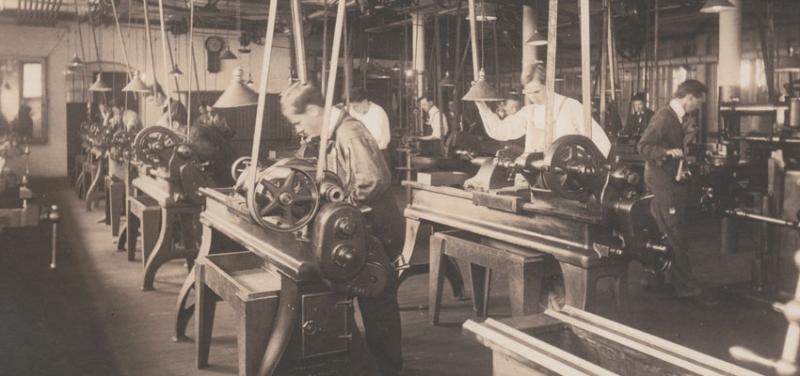From textiles to textbooks: Homage to UMass history
The rich textile history of the South Coast is woven into the fabric of the University of Massachusetts Dartmouth — and still continues to this day.
“Textile design and manufacturing were the foundation of what has become UMass Dartmouth,’’ said Charlotte Hamblin, an instructor in the textile design and fiber arts program at UMass Dartmouth.
The university’s roots reflect the area’s colorful history of textiles, which was booming in the 1800s, particularly in New Bedford, Fall River and Lowell.
By 1868, Fall River had surpassed Lowell as the leading textile city in America with over 500,000 total spindles. That figure was later exceeded by New Bedford, which had more than 3.7 million spindles at its peak, around 1920.
These industries required a knowledgeable workforce. In order to educate designers, textile chemists and mill managers, mill owners petitioned the legislature to open state-funded textile schools.
Laws enacted in 1895 allowed the mayor of any city in Massachusetts with 450,000 or more spindles in operation to file for incorporation of a textile school.
That year, the New Bedford Textile School was born, marking the beginning of what is now UMass Dartmouth.
Tasked to provide "instruction in the theory and practical art of textiles and kindred branches of industry," the school’s first building was built in 1899 at 1213 Purchase Street in downtown New Bedford. It housed a training facility for mid-level managers in the local mills, complete with its own mini-Jacquard loom, a special tool to weave fabrics of intricate design.
Three-year diplomas were granted in general textile manufacturing, textiles design, chemistry, and knit goods manufacturing, as well as a two-year certificate in textile technology.
Evening classes allowed mill workers to expand their skills and knowledge. During the 1920s and 1930s the curriculum at the New Bedford Textile School expanded to include knitting technology, textile chemistry, dyeing and finishing, and fashion and textile design.
Changes to the textile industry introduced courses in economics and merchandising in the 1940s.
But the decline of the New England textile industry and the end of World War II forced the schools to explore new options and forge new identities. To take advantage of the GI Bill, they requested permission to grant four-year degrees and expanded the curriculum with engineering, chemistry, and business administration courses in response to a growing need for broader educational opportunities in southeastern Massachusetts.
In 1960, New Bedford Institute of Technology and Bradford Durfee College of Technology in Fall River merged to form Southeastern Massachusetts Technological Institute (SMTI).
A generation later, in 1991, a new University of Massachusetts structure combined the Amherst, Boston and Worcester campuses with the Southeastern Massachusetts University and the University of Lowell. SMU became UMass Dartmouth.
The names have changed and the university has grown but textiles remain part of the school’s vibrant tapestry.
Students from the 1980s to 2000, wove alongside the Jacquard that was originally housed at the 1213 Purchase Street building, Hamblin said, “giving their work rich cultural context.’’
Today, located at the home of the former Star Store department store at 715 Purchase St. in downtown New Bedford, just blocks from the original building, the College of Visual and Performing Arts campus features an urban arts complex with studios, galleries and state-of-the-art equipment.
CVPA students can major in a number of subjects, including receiving a bachelor of fine arts degree in art and design: textiles.
“The textiles curriculum continues to focus on woven and print design for industry while also emphasizing the development on individual artistic expression through contemporary hand and digital techniques,’’ Hamlin said.
“An essential component of their training,’’ she said, is “the global and cultural history of textiles.’’
The university today is “very different,’’ and has “evolved over the years’’ from the one inspired by the needs of textile mills 125 years ago, said Judy Farrar, archives and special collections librarian at UMass Dartmouth.
Understanding that history gives depth to the university, she noted.
“History is interesting,’’ Farrar said. “It tells you why you are what you are now.’’
In the case of UMass Dartmouth, the study of textiles has been stitched through the pattern of its vibrant history.















